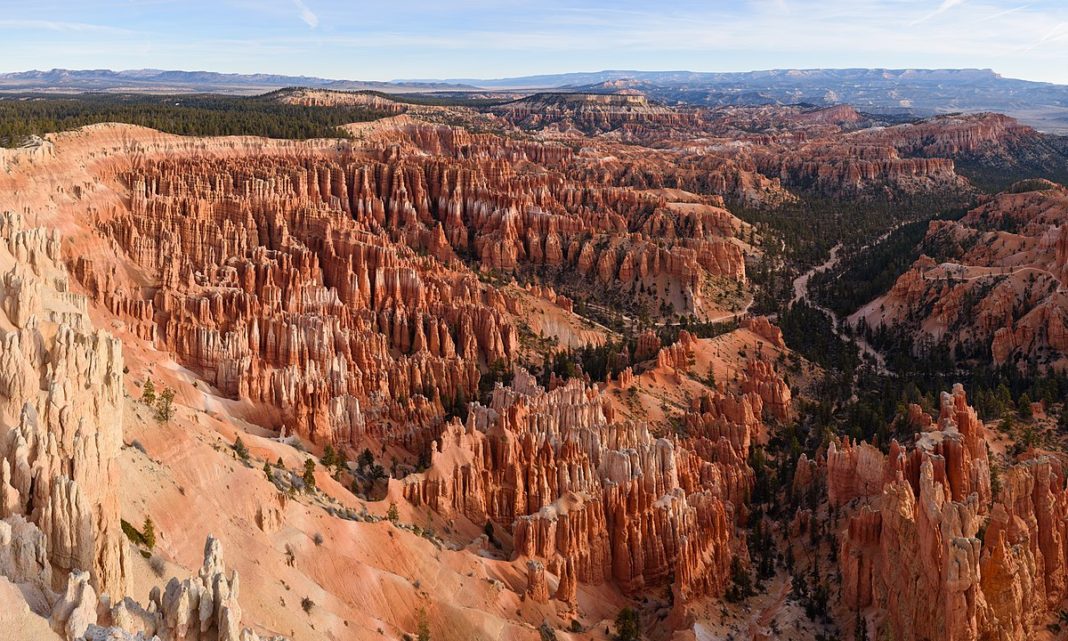Bryce Canyon National Park is an American national park located in southwestern Utah. The major feature of the park is Bryce Canyon, which despite its name, is not a canyon, but a collection of giant natural amphitheaters along the eastern side of the Paunsaugunt Plateau.
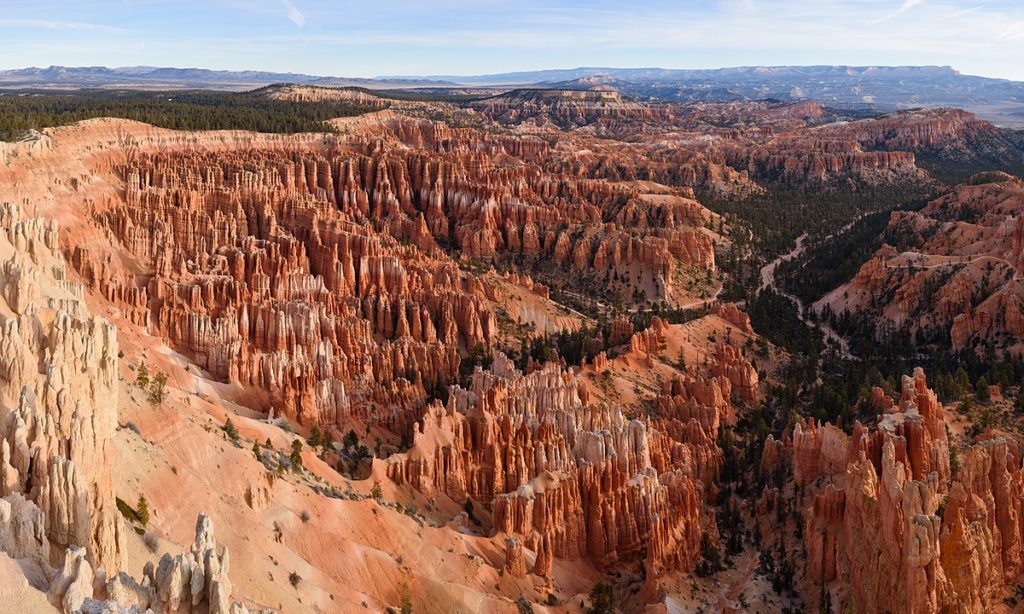
Bryce is distinctive due to geological structures called hoodoos, formed by frost weathering and stream erosion of the river and lake bed sedimentary rocks. The red, orange and white colors of the rocks provide spectacular views for park visitors. Bryce Canyon National Park is much smaller and sits at a much higher elevation than nearby Zion National Park.
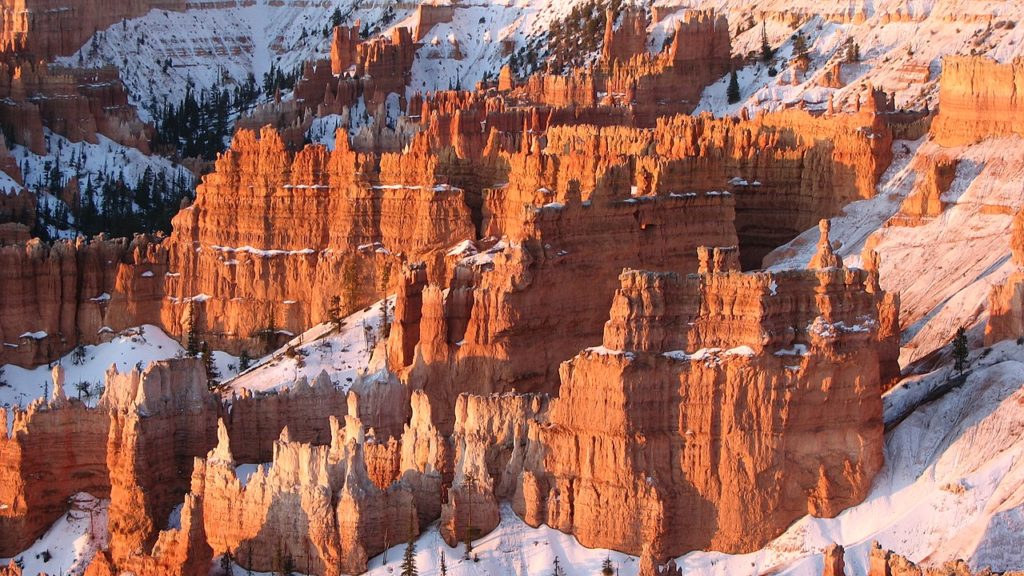
Bryce Canyon was not formed from erosion initiated by a central stream, meaning it technically is not a canyon. Instead, headward erosion has excavated large amphitheater-shaped features in the Cenozoic-aged rocks of the Paunsaugunt Plateau. This erosion resulted in delicate and colorful pinnacles called hoodoos that are up to 60 m high. A series of amphitheaters extends more than 30 km north to south within the park. The largest is Bryce Amphitheater, which is 19 km long, 5 km wide, and 240 m deep.
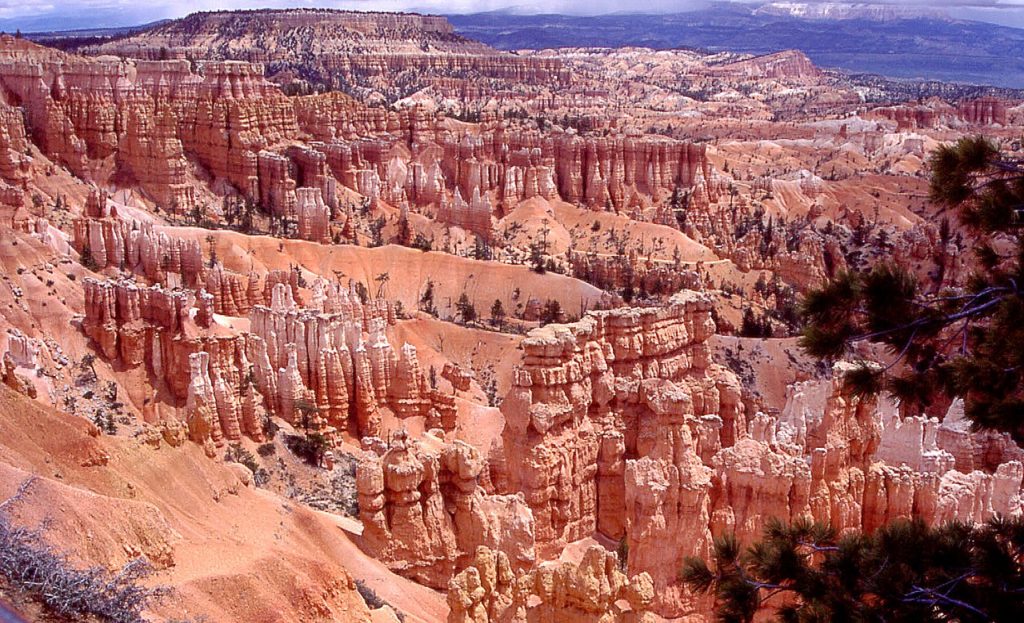
The brown, pink, and red colors are from hematite (iron oxide; Fe2O3); the yellows from limonite (FeO(OH)•nH2O); and the purples are from pyrolusite (MnO2). Also created were arches, natural bridges, walls, and windows. Hoodoos are composed of soft sedimentary rock and are topped by a piece of harder, a less easily eroded stone that protects the column from the elements. Bryce Canyon has one of the highest concentrations of hoodoos of any place on Earth.
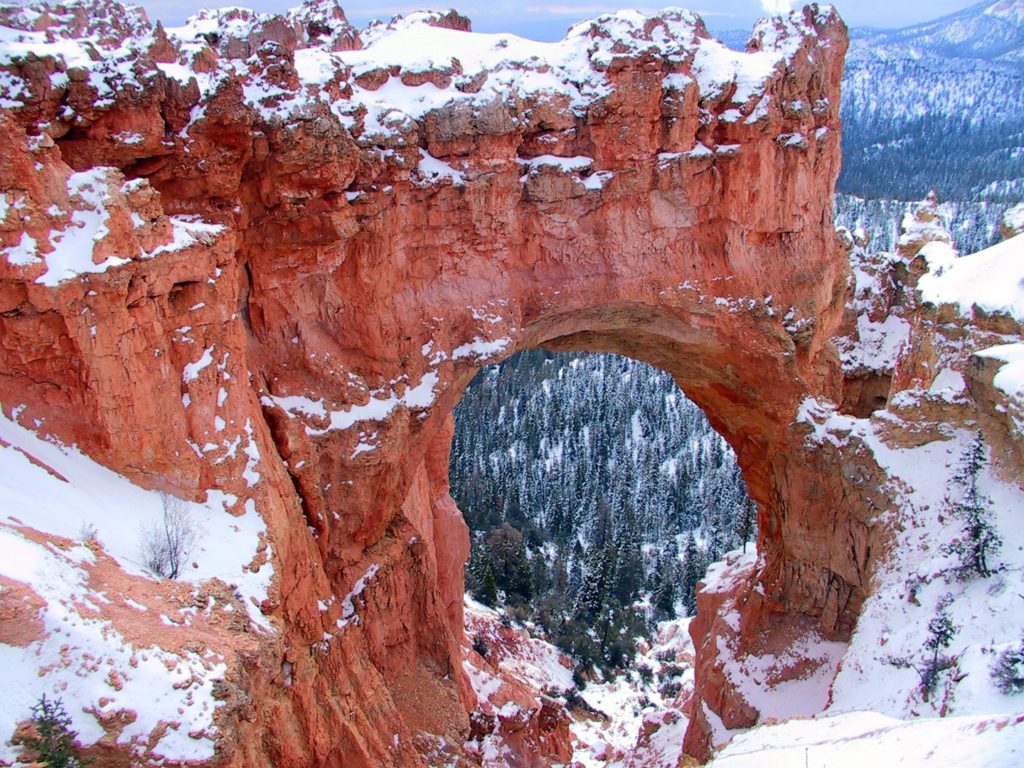
The Bryce Canyon area was settled by Mormon pioneers in the 1850s and was named after Ebenezer Bryce, who homesteaded in the area in 1874. The area around Bryce Canyon was originally designated as a national monument by President Warren G. Harding in 1923 and was re-designated as a national park by Congress in 1928.
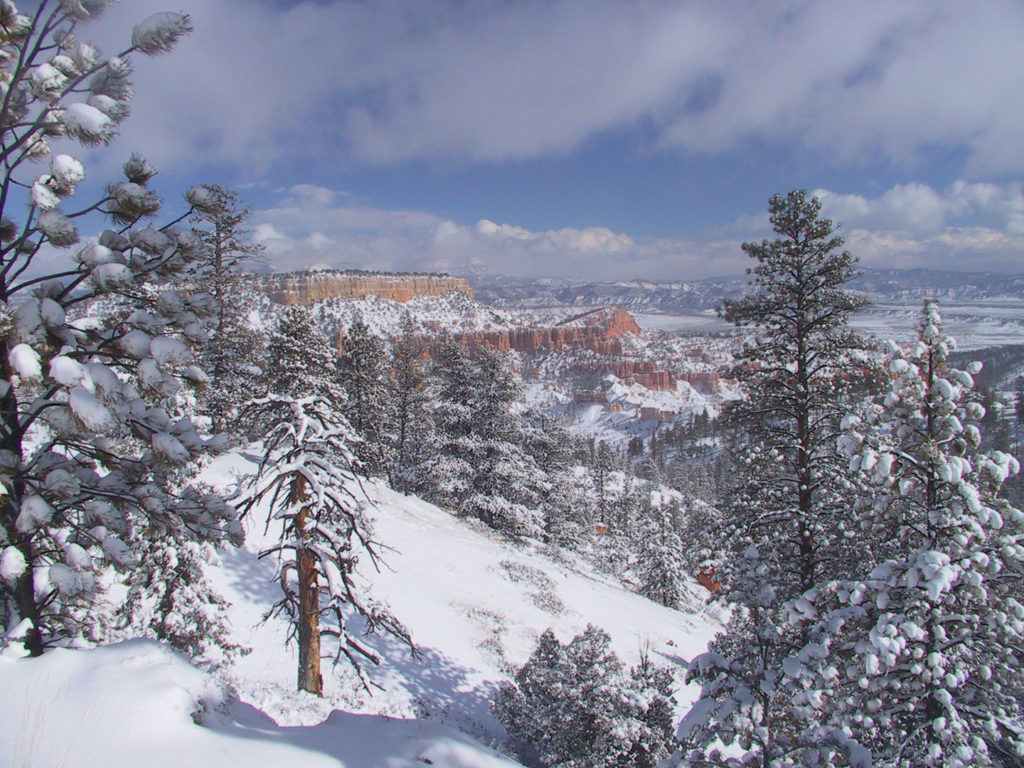
In 2018, Bryce Canyon received 2,679,478 recreational visitors, which was an increase of 107,794 visitors from the prior year.
According to Wikipedia





